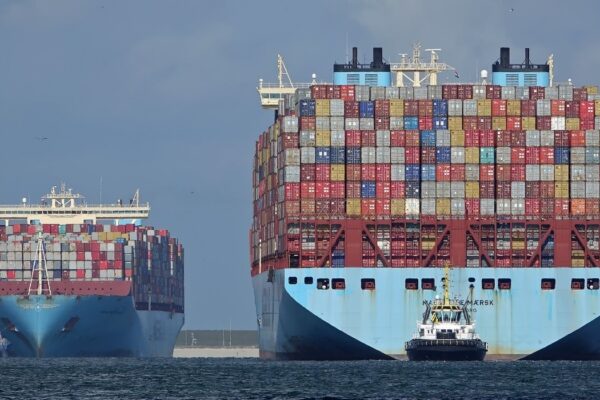The hopes of shippers that freight rates might return to normal this year have been repeatedly dashed by a series of supply chain disruptions: there has been the Suez Canal blockage in March, the Covid outbreak at Yantian in May-June, ongoing container shortages, adverse weather conditions and trade-lane bottlenecks. Network disruptions mean container shipping operators now need more vessels to transport the same amount of cargo than they did pre-pandemic.
The domino effect is seen in increased congestion at destination ports, as delayed ships pile up and wharf-side operations become overwhelmed, which in turn results in the backlog of vessels further along the schedule. Together with delayed transit times, an inevitable outcome of all this is that container freight rates continue to set new record highs.
A.P. Moller-Maersk, the world’s largest container shipping operator, has reported that second-quarter 2021 ocean volumes increased 15% year on year, with average freight rates surging 59%. In the first quarter, volumes increased 5.7% year on year, while rates rose by 35%.
Japanese carrier ONE – the sixth-ranked global container liner – has said its ships have raised their speed, increasing fuel consumption and pollution, to take advantage of higher demand. The Alliance carrier and its partner Hapag-Lloyd have both reported stellar profits for the second quarter.
Hitherto, carriers have tended to avoid any suggestion that they were authorising their vessels to speed up, due to environmental concerns. In our first news posting for the year, back on 07 January, we optimistically reported on efforts to “clean up global cargo shipping.â€
However, with the cost of fuel now a much lower percentage of the extraordinarily high freight rates carriers are charging shippers, the incentive is there to speed up to carry more freight – even though vessel operators report severe shore-side and inland congestion. So, it is a case of profits coming before the environment.
The spike in freight rates is not only being felt in Australia – it is in fact occurring worldwide. In the United States, importers lodged a formal complaint to the Federal Maritime Commission (FMC) last week, accusing shipping lines of price gouging. The documented grievances state that carriers are operating cartels, allowing foreign shipping interests to co-ordinate business practices and charge extortionate prices. They allege that the lines are, in effect, profiteering by manipulating the market illegally.
We do expect that freight rates will eventually come down, when container demand normalizes and supply chain bottlenecks and capacity constraints ease. Demand for goods is expected to start leveling off as spending on services recovers, while inventory restocking will likely sustain production and container imports.
Some shipping executives warn that the situation will not return to even a semblance of normality before Chinese New Year (February) 2022 – and there are a lot of indications that it could go beyond that.
Meanwhile, the major carriers appear to be anticipating that their massive profits will continue well into the foreseeable future. Caught in the middle, the shipper foots the bill and, ultimately, the cost is borne by Australian businesses and consumers in the form of price inflation.
For the latest information on freight rates and shipping schedules, talk to us here at Colless Young. As licensed Customs Brokers and International Freight Forwarders, we offer correct, professional advice on all your import and export cargo movements. We are based in Brisbane and provide a complete range of logistics services, both air and sea freight, including fumigation, warehousing and trucking – through all Australian ports and airports.

